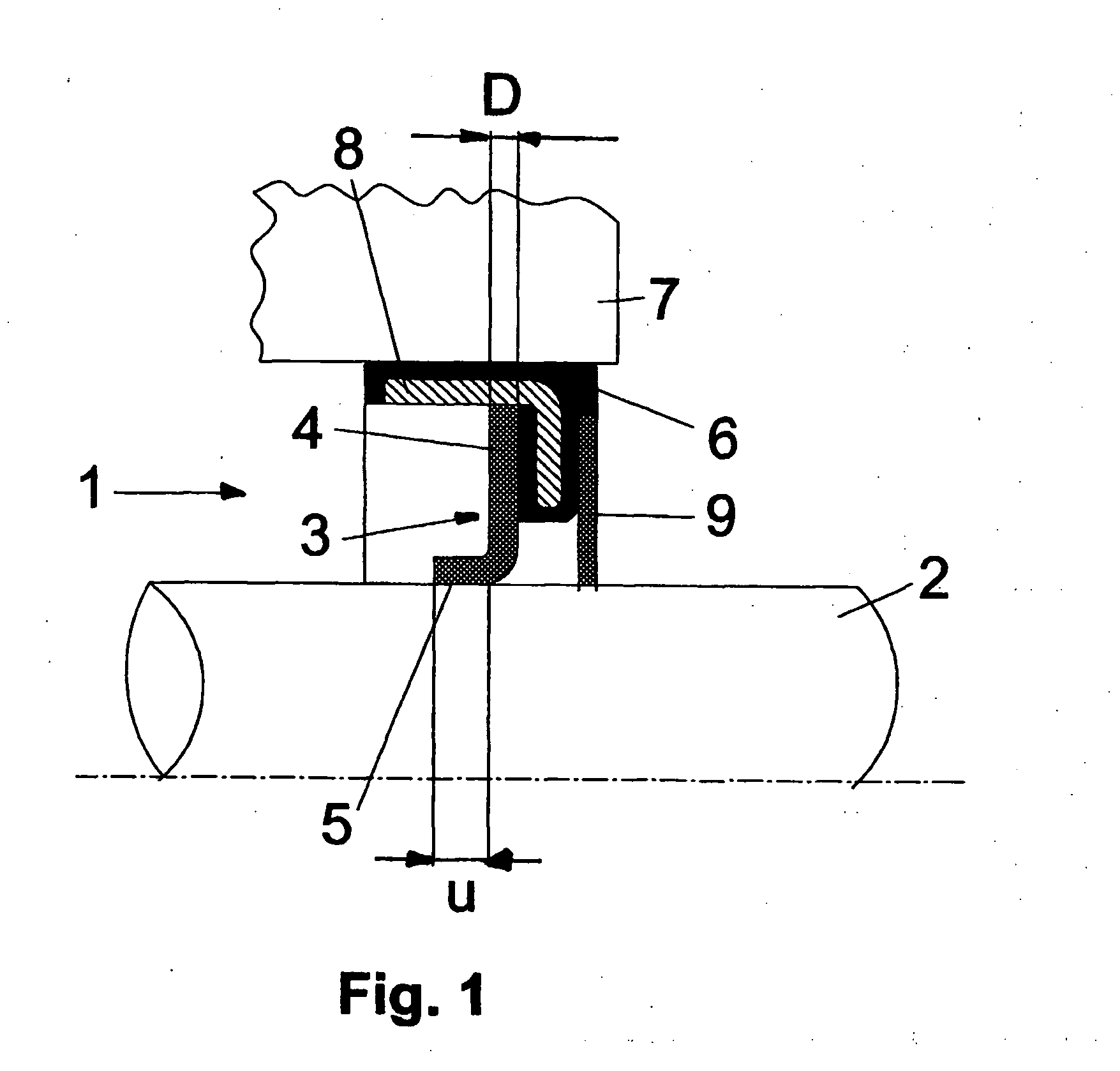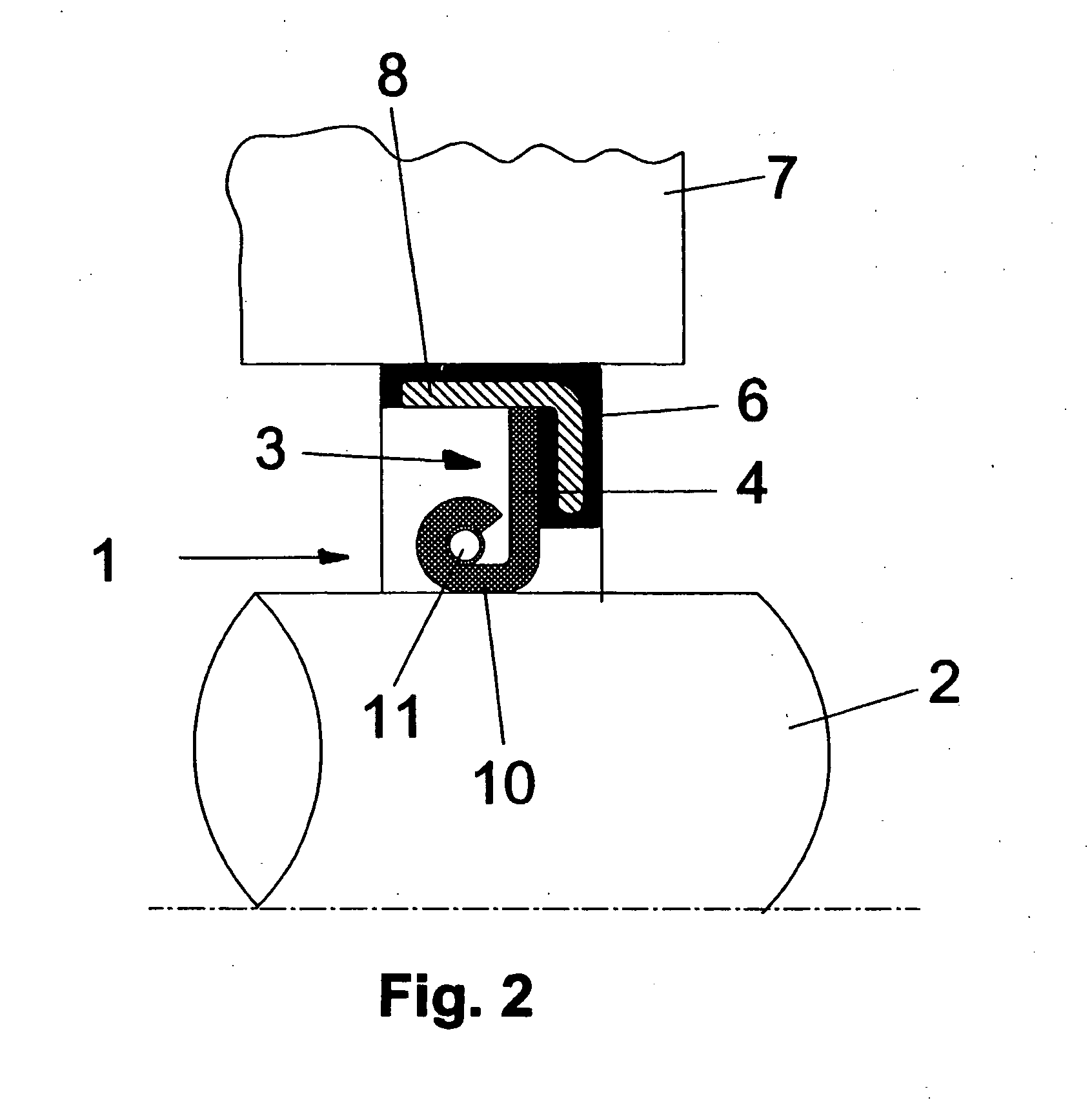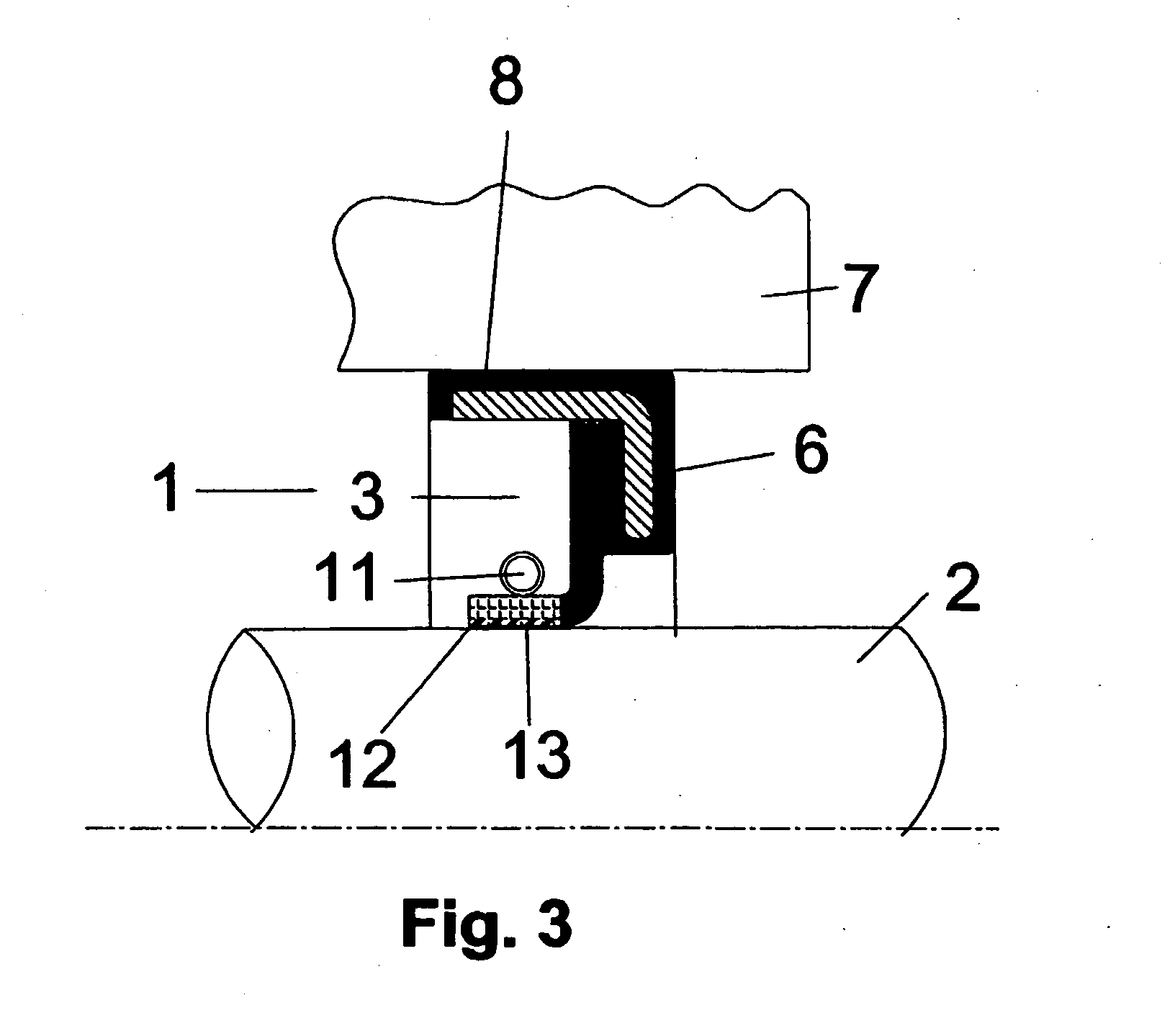Radial shaft seal and method for making same
a technology of radial shaft and sealing rod, which is applied in the direction of engine seals, mechanical devices, engine components, etc., can solve the problems of tension loss, increased frictional moment of torque of the overall system, etc., and achieves low frictional forces and good sealing properties.
- Summary
- Abstract
- Description
- Claims
- Application Information
AI Technical Summary
Benefits of technology
Problems solved by technology
Method used
Image
Examples
example
[0034] To prepare a radial shaft seal, 1.0-mm-thick non-woven fabric webs were made from 8-15 mm-long fibers. The non-woven fabric webs were impregnated with an aqueous PTFE dispersion and then passed through squeeze rollers. They were then dried in a continuous oven at a temperature of 260° C. and laminated in a compressing apparatus. Annular sealing elements were punched out of the resulting laminate and inserted into a shaft seal. The radial shaft seal was pushed over a shaft, the diameter of which was slightly larger than the inner diameter of the sealing element opening. This resulted in a slight bending of the sealing element edge, the overlap amounting to about 1.5 mm. The performance of the seal in terms of friction and tightness was surprisingly good.
PUM
 Login to View More
Login to View More Abstract
Description
Claims
Application Information
 Login to View More
Login to View More - R&D
- Intellectual Property
- Life Sciences
- Materials
- Tech Scout
- Unparalleled Data Quality
- Higher Quality Content
- 60% Fewer Hallucinations
Browse by: Latest US Patents, China's latest patents, Technical Efficacy Thesaurus, Application Domain, Technology Topic, Popular Technical Reports.
© 2025 PatSnap. All rights reserved.Legal|Privacy policy|Modern Slavery Act Transparency Statement|Sitemap|About US| Contact US: help@patsnap.com



